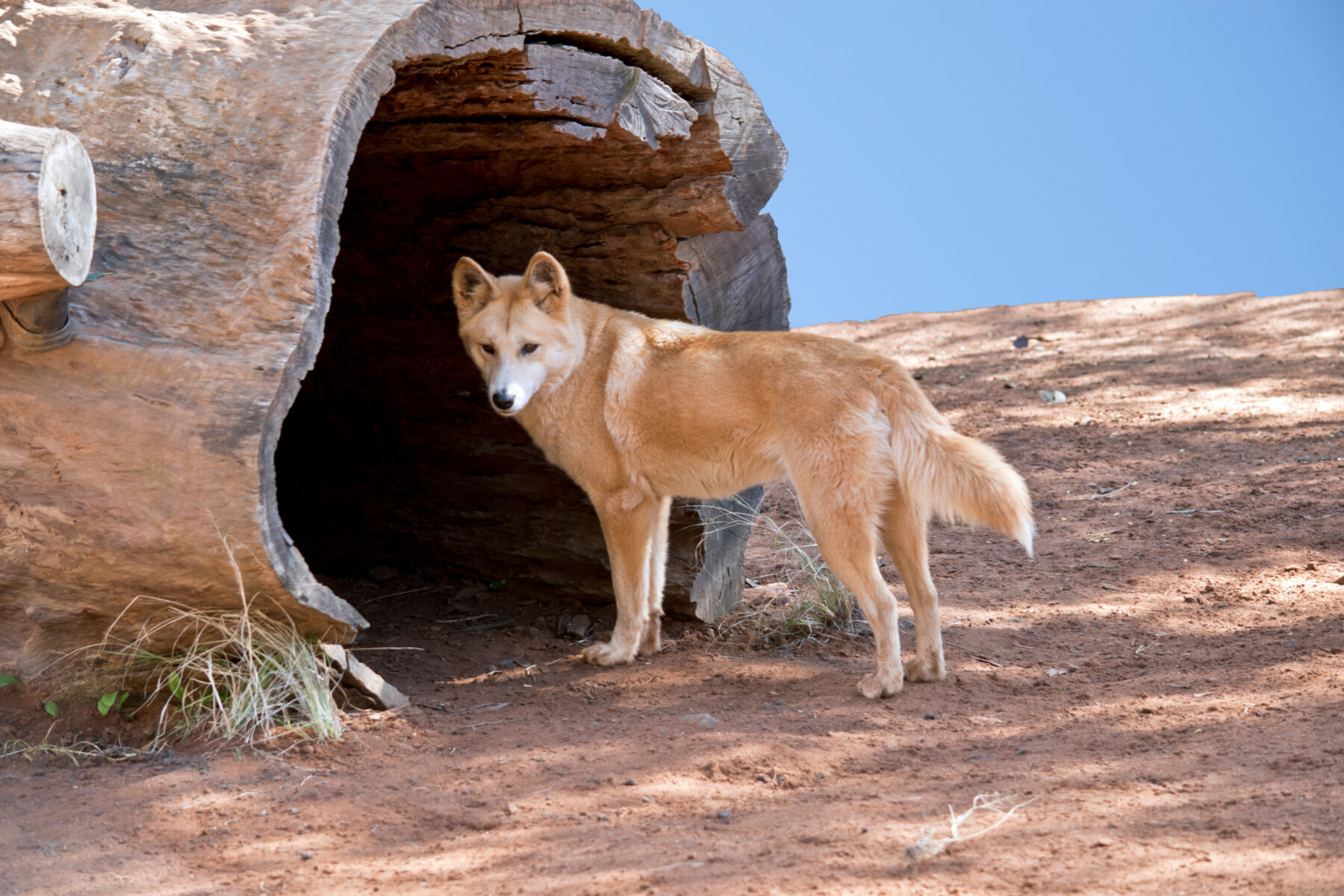Dingo culling: a sanctioned killing of native animals

An Australian and US team of geneticists and ecologists has tested wild and captive-bred dingoes from across the country and found little evidence of interbreeding with domestic dogs.
It challenges current widespread practices that legally condone the trapping, shooting and baiting of animals labelled as either “wild dogs or dingoes”.
Controversial management
“What we’ve found from DNA testing of more than 300 animals across Australia is that most are pure dingoes, or are more than 93 per cent dingo, which in a conservation context would be considered to be pure dingo,” lead author on the paper, Dr Kylie Cairns, a University of NSW expert in molecular biology and conservation genetics, told Australian Geographic.
“It tells us that most of the animals being killed as wild dogs or as an invasive pest are actually dingoes, and dingoes are a native animal, so they have been culling a native animal under the guise of invasive species management.”
“Dingo management” in Australia has long been a controversial issue, with a strong us-and-them mentality existing at various times between pastoralists, ecologists and conservationists.
Kylie has been working in this field for more than a decade, has had engagement with pastoralists and understands dingoes can affect livestock producers. “That’s not debatable,” she acknowledges.
She explains, however, that pastoralists across the world are now coming to grips with how to manage the conflict to keep predators in the environment, where they play an important ecological role, while still protecting livestock and sustainable agriculture.
“There are things farmers can do to minimise the impact of dingoes [on their properties] and that is [what] farmers in other countries are starting to do because they have to co-exist with large predators like lions or tigers, or bears or wolves, as in North America.”
There’s rarely one solution, she points out, but there are a range of measures that can be put in place to minimise the impact of dingoes on livestock.
“Electric fencing can be really effective, or simply improving your fencing… and even making sure you actually have fences,” Kylie says. “Using livestock-guarding animals, like Maremma dogs, can also be really effective.”
Sanctioned slaughter
The acceptable killing of dingoes in Australia has proceeded since European pastoralists began farming the continent two centuries ago.
Initially it was seen as simply a routine and necessary form of management. Then during the 20th century, as ecologists and conservationists advocated that dingos should be protected because they are native animals, disputes arose as to whether dingoes had been on the continent long enough to be considered a native species.
Now, under most definitions, it’s widely appreciated that the dingo is a native Australian animal.
Firstly, the time period dingoes are known to have occurred on the continent supports that. Dingoes have indisputably been here at least 4000 years, but perhaps, according to some evidence, longer than 7000 years.
“Even if their ancestors have originally come from outside Australia, they’ve been in Australia long enough to be naturalised,” Kylie says.
That means they’ve become an important component of land-based food chains and other environmental dynamics.
“Dingoes are the only large terrestrial land-based predator in Australia and prey have adapted to that.
“If you look at any [relevant] legislation in Australia, dingoes are considered a native animal,” Kylie explains. “In fact, through my science research I sometimes have to send samples overseas for DNA testing and I need to have an export permit [to do that] because they are considered a native animal.”
Confusing legislation
Although dingoes are protected at the federal level, there are various pieces of state legislation that allow for them to be culled.
“What’s happened is we have conflicting legislation in some states, so environmental legislation will say dingoes are native animals, but if you look at invasive animal or agricultural legislation it declares wild dogs to be a pest and the definition of ‘wild dog’ includes pure dingoes, dingo-hybrids and feral dogs.
“If you look at the federal government [legislation], which is kind of above some of the state management issues, they definitely consider dingoes to be a native animal.”
The recent paper identified “at least four wild dingo populations and a separate captive dingo population in Australia [and that] the presence of dog ancestry in wild dingoes is much less common than previously hypothesised.”
“Without being critical, I think we are definitely behind the globe in terms of showing we are managing conflict with wildlife – any wildlife.” Kylie says. “But I also think it’s different here, so we haven’t changed over time but also our agricultural systems are quite different to other countries – for example, we have really large agricultural properties that have huge numbers of stock and low numbers of people compared to other countries where they don’t really have that.”









